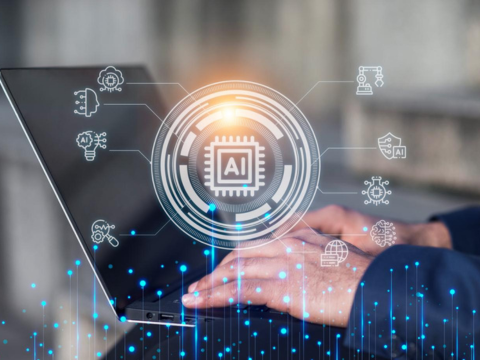In today’s rapidly evolving digital landscape, artificial intelligence (AI) and machine learning (ML) are no longer just buzzwords; they are pivotal forces transforming industries across the board. One area experiencing significant disruption is IT management. For IT Management students and aspiring tech leaders, understanding how these technologies are reshaping traditional IT roles, processes, and strategies is crucial to staying relevant and competitive in the workforce.
The Evolution of IT Management
Traditionally, IT management has focused on maintaining infrastructure, managing networks, ensuring cybersecurity, and supporting enterprise software. The approach was often reactive, emphasizing issue resolution and system maintenance. However, the advent of AI and ML has led to a paradigm shift toward proactive and predictive management, driven by data analytics and automation.
Proactive Problem Solving with Predictive Analytics
AI and ML allow IT departments to transition from reactive to proactive problem solving. Predictive analytics can anticipate issues before they occur, enabling IT managers to implement preventive measures. For example, AI-driven monitoring tools can detect anomalies in system performance and flag potential failures before they impact business operations. This not only reduces downtime but also enhances system reliability and performance.
Automation and Efficiency
One of the most visible impacts of AI in IT management is automation. Repetitive tasks such as software updates, network diagnostics, and system backups can now be automated, freeing up valuable human resources for more strategic initiatives. Robotic Process Automation (RPA), powered by AI, enables seamless execution of routine tasks, significantly increasing operational efficiency.
Moreover, AI-powered chatbots and virtual assistants are transforming IT help desks by handling common user queries, resetting passwords, and troubleshooting basic issues. This reduces the workload on human staff and improves response time and user satisfaction.
Enhanced Cybersecurity
Cybersecurity is another critical domain being revolutionized by AI and ML. Traditional cybersecurity methods often rely on predefined rules and manual oversight, which may not be sufficient to combat today’s sophisticated threats. AI-based security systems can analyze vast amounts of data in real-time to detect unusual behavior, identify potential threats, and respond faster than any human could.
Machine learning models can learn from past cyber incidents to improve threat detection accuracy. They can also adapt to new attack vectors, making cybersecurity systems more resilient and intelligent over time.
Intelligent IT Infrastructure Management
AI and ML are integral to the development of self-managing IT infrastructures, also known as AIOps (Artificial Intelligence for IT Operations). AIOps platforms combine big data and machine learning to automate and enhance IT operations through real-time analytics, anomaly detection, and intelligent automation.
With AIOps, IT managers gain deep insights into system performance, user behavior, and application health. These insights enable faster decision-making, streamlined operations, and improved service delivery, which are essential in today’s fast-paced business environment.
Strategic Decision-Making and Resource Allocation
AI and ML are not only optimizing day-to-day operations but also empowering strategic decision-making. Advanced analytics tools can assess vast data sets to provide actionable insights for resource allocation, project planning, and risk management. For instance, predictive models can forecast IT budget requirements based on usage patterns and business growth, enabling more informed financial planning.
By leveraging AI, IT managers can align technology investments with business goals, ensuring that resources are allocated where they have the greatest impact.
Challenges and Ethical Considerations
Despite the numerous advantages, integrating AI and ML into IT management is not without challenges. Data privacy, algorithmic bias, and the need for upskilling are significant concerns.
- Data Privacy: AI systems require vast amounts of data to function effectively. Ensuring the privacy and security of this data is paramount to avoid breaches and maintain user trust.
- Bias in Algorithms: Machine learning models can inadvertently reflect or amplify biases present in the training data. IT managers must ensure transparency and fairness in AI applications.
- Workforce Impact: Automation may lead to job displacement for roles that involve routine tasks. However, it also creates new opportunities for professionals who can manage and interpret AI systems. Thus, continuous learning and upskilling are essential for IT professionals.
Preparing for the Future: What IT Managemnt Students Should Do
For IT Management students, the rise of AI and ML presents both a challenge and an opportunity. To stay ahead, students should:
- Develop Technical Proficiency: Gain foundational knowledge in AI and ML concepts, tools, and platforms.
- Focus on Strategic Thinking: Understand how AI can drive business value and align IT initiatives with organizational goals.
- Cultivate Data Literacy: Learn how to analyze and interpret data to make informed decisions.
- Enhance Soft Skills: Leadership, communication, and ethical reasoning are vital in managing AI-powered teams and technologies.
- Stay Updated: Keep abreast of emerging trends, tools, and regulations related to AI in IT management.
Conclusion
AI and Machine Learning are fundamentally reshaping IT Management by introducing smarter, faster, and more efficient ways of working. From predictive analytics and automation to enhanced cybersecurity and strategic decision-making, these technologies are becoming indispensable in the IT landscape. For IT Management students, embracing these innovations and preparing for a hybrid future of human-machine collaboration is not just an option—it’s a necessity.
By equipping themselves with the right skills, mindset, and knowledge, tomorrow’s IT leaders can harness AI and ML to drive innovation, efficiency, and business success.

